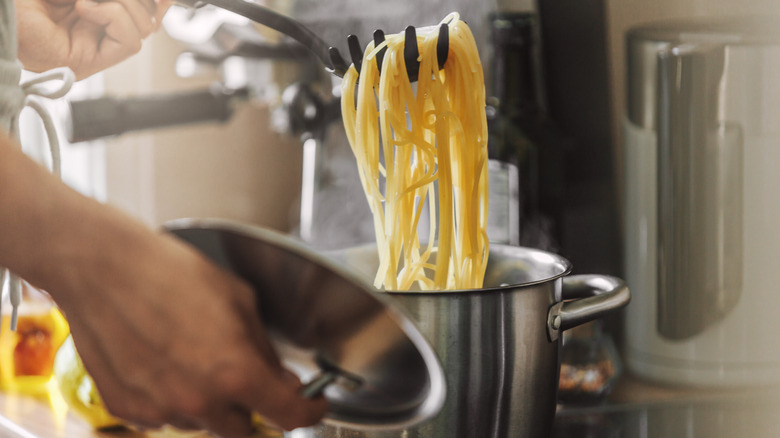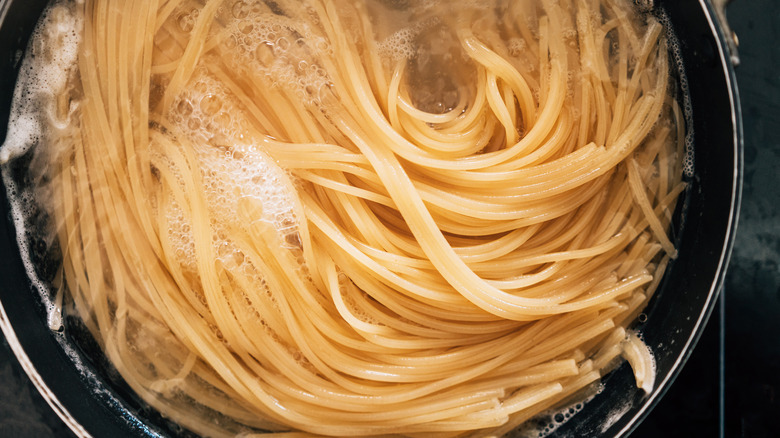Here's How You Can Tell When Your Pasta Is Al Dente
You may have seen people throwing pasta against a wall to determine if it is done. Whether you've tried it yourself or gotten a laugh out of others making the attempt, chances are you've heard of this trick. Unfortunately, it's all wrong. This method is actually a total pasta myth, according to Rachael Ray, which notes that pasta only gets starchier and more sticky as it cooks. This means that pasta that clings to the wall is definitely overcooked.
Pasta that is properly cooked should be al dente, or a "to the tooth" texture. That means that the pasta still has some resistance when you bite through it. While you can obviously keep taking pieces of pasta out of the boiling, well-salted water to test the texture, this means that you'd have to keep trying them until you think the pasta is just right.
However, you can save yourself some time (and at least a few bites into undercooked food) if you know what to look for in al dente pasta. That said, you will still need to taste the pasta to really be sure it's reached the correct texture — it just won't happen nearly as often and you certainly won't be flinging a handful of noodles at your kitchen wall.
This is exactly to tell if pasta is al dente
According to the always scientific explanations of Cook's Illustrated, pasta is starch that's been bonded together by proteins. As pasta cooks in a boiling pot of water, the starches take on liquid. And while some starch molecules explode after taking on too much water and then pour their component parts into the mix, the starches deeper inside of the pasta are less saturated. You could think of this as less cooked. This is precisely when the pasta has reached an al dente state.
Ultimately, what that means is that, when you bite into a piece of pasta to determine if it is done, you should see just a touch of white at the center of the noodle. It should be a light color and not too stark of a difference, lest it is underdone. The pasta should be somewhat firm, but definitely not crunchy.
Pay close attention to the pasta as it cooks and start trying it a little earlier than when you think it should be done. If you pay attention to the color and the time it's been in the pot, you shouldn't have to take too many bites of pasta before it reaches the perfect al dente state.

